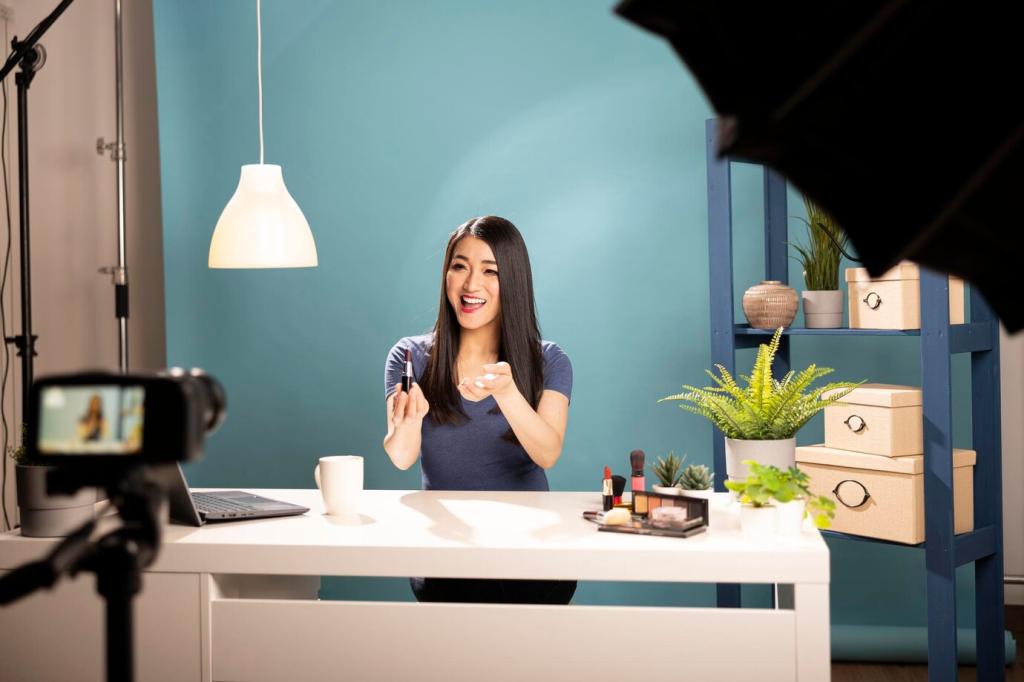
Interior Design Copy That Converts and Captivates
Chosen theme: Interior Design Copy That Converts and Captivates. Step into a home page built like a well-composed room—inviting, purposeful, and persuasive—where every word earns its place and gently guides readers toward a confident yes.

Storytelling That Sells Rooms
Describe the before with sensory honesty: echoey hallway, harsh downlights, kid backpacks underfoot. Paint the after with lived rituals: softer evenings, a landing spot for mail, a bench that gathers conversations. Then build the bridge—your process—so the leap from now to new feels comfortably possible.
Let walnut whisper warmth, terrazzo recall childhood kitchens, linen drapes soften city edges. Tie materials to meaning, not price tags. A short anecdote—tea rings on a sealed oak table that now spark conversations—turns a specification into a story that sells without shouting.
Close stories with an opening: “Ready to write your family’s foyer scene?” or “Shall we light your dining room like a favorite memory?” These narrative calls to action feel personal, not pushy. Ask readers to comment with a room they want to rewrite, then subscribe for story-led prompts.



Conversion-Centered Website Architecture
In the first view, state the transformation, define the audience, and offer a next step. One sentence for the promise, one for proof, one for the path forward. Keep distractions minimal. Think of this area as your entry hall: uncluttered, directional, beautifully confident.
Conversion-Centered Website Architecture
Visitors arrive with different questions: style fit, process clarity, budget confidence, or timeline. Create labeled paths that answer each intent in three to five concise sections, ending with a relevant micro-conversion. Minimal menus, meaningful wayfinding—more gallery, less maze.
Search Intent for Design-Led Audiences
From Inspiration to Inquiry
Map queries to moments: early-stage searches love style guides and room mood boards, mid-stage wants process and timeline, late-stage craves cost context and availability. Write each piece to serve a specific decision point, with an appropriate invitation aligned to that exact stage.
Simple Slugs, Structured Clarity
Use clean URLs that mirror intent—“/small-living-room-layouts” beats cleverness every time. Add descriptive headings and internal links that feel like a guided tour. Clarity signals authority, reassuring both readers and search engines that your pages deliver precisely what was promised.
Evergreen Pillars and Seasonal Sparks
Build cornerstone pages on kitchens, bathrooms, and small-space strategies, then layer seasonal moments—holiday hosting layouts, summer light optimization. Each seasonal piece should link back to your pillars, sustaining visibility and keeping your brand present when readers are ready to take action.


Words and Visuals in Perfect Symmetry
Describe how light travels, how fabrics invite touch, how circulation becomes calm. Pair captions with visual intent: note why a rug anchors sightlines or how a mirror bounces warmth. Words should decode the design logic so appreciation naturally becomes trust and, ultimately, conversion.
Words and Visuals in Perfect Symmetry
Resist overcrowding your pages. Negative space makes arguments stronger, just as breathing room elevates a room scheme. Short paragraphs, generous margins, and deliberate pacing communicate confidence. Invite readers to linger with a soft CTA placed where their curiosity naturally peaks.




Carousel Hooks that Earn the Swipe
Lead with a tension: “The five inches that made this hallway feel twice as wide.” Follow with cause-and-effect slides that teach a specific principle. End with an invitation to save the post and subscribe for a monthly roundup of space-making strategies that truly translate to real homes.

Short-Form Video Scripts That Respect Time
Use a three-beat script: problem in one sentence, principle in two, proof in three. Caption with a concise takeaway and a single action. Viewers should feel smarter in thirty seconds and ready to click your bio link to continue a focused, well-planned journey.

Ad Copy with Clarity and Care
Promise one outcome, set one expectation, offer one path. “Light-lift kitchen redesigns for busy families—plan yours in a 20-minute consult.” Keep the tone human and the claims grounded. Invite comments with a gentle prompt: “What’s the one corner you wish worked harder for you?”
